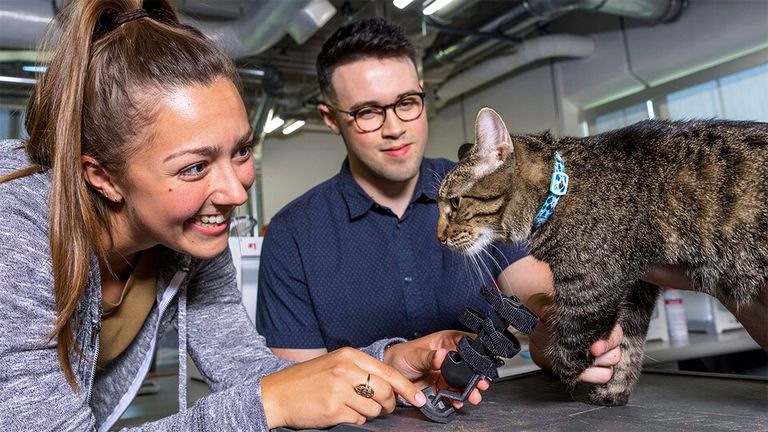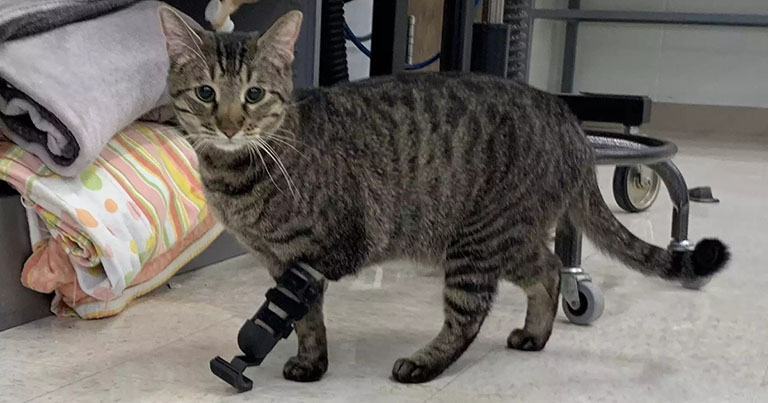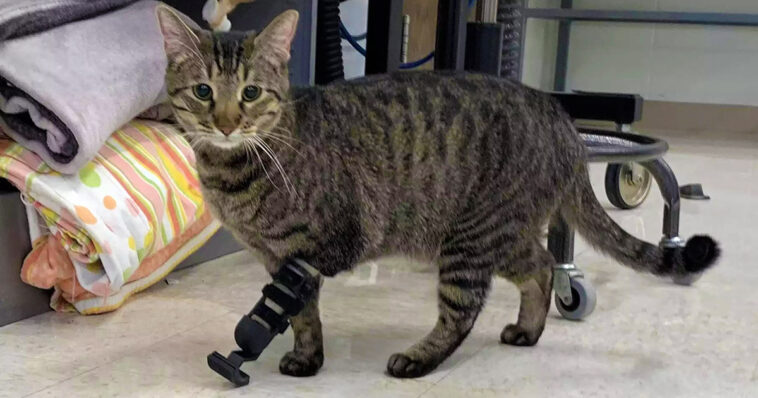One day, Olive the three-legged cat was taken from a shelter in Nebraska to take part in an engineering project that would change her life forever.
You see, Olive was missing the bottom half of her left leg, and the task of this project was to create a 3D prosthetic for her.
“I was initially skeptical as I am not a cat person and had not particularly considered prosthetics as a part of my future career,” said Harrison Grasso, a senior at the University of Nebraska-Lincoln who worked with Olive.
“However, I was excited to learn that I would get to work on a project that included a mechanical device and a physical deliverable for the client.”

They were tasked with creating a prosthetic that was ‘adjustable, removable, and non-toxic’ and all cost below $100.
So veterinarian Beth Galless, who is also an assistant professor at the uni’s vet medicine programme, brought Olive to the school. Olive wasn’t the first three-legged cat that Galles had ever worked with.
Over a few months, after much designing, altering and refining the two-piece creation was complete.
It was made from plant materials and a sturdy plastic, and although it looked quite minimal in design, it wasn’t that simple.
“The primary challenge was getting the prosthetic to work with the cat. As you could probably imagine, Olive was not particularly excited to try on the device,” Grasso says.
“It took three rounds of testing and refinement to find a solution that allowed the prosthetic to stay secured to Olive’s leg. Olive’s slick fur and loose skin around the amputation site made it difficult to fit the prosthetic. Additionally, Olive was able to shake free of the prosthetic early on in the development process.”
“Olive was initially hesitant and reluctant to wear the device and put weight on it, which is a normal response for an animal that has been fitted for a prosthetic. Olive did her best to wriggle free of the prosthetic while we were trying to put it on and after,” Grasso says.

“However, after she had time to adjust, she was more willing to use the prosthetic. Although our time with Olive during testing was brief, we did see her begin to use the prosthetic to walk and jump.”
Finally, a happy ending.
After around a semester and a half working on the perfect prosthetic, they were complete, and it left the students feeling fulfilled.
“I enjoyed our project because it allowed us to work autonomously with minimal supervision and gave us the opportunity to exercise all of the knowledge and skills that we had accumulated over the past four years,” he says.
“It was a great exercise in teamwork and engineering that closely approximated the experiences we might have in our future engineering careers. Our project was unique because of the living subject. This allowed us to put our product to the test and see how our design might actually function.”
Now not only does Olive have a brand new leg, she also has a new home. Galles became so smitten with the cat that she and her family officially adopted her when the project was complete.



